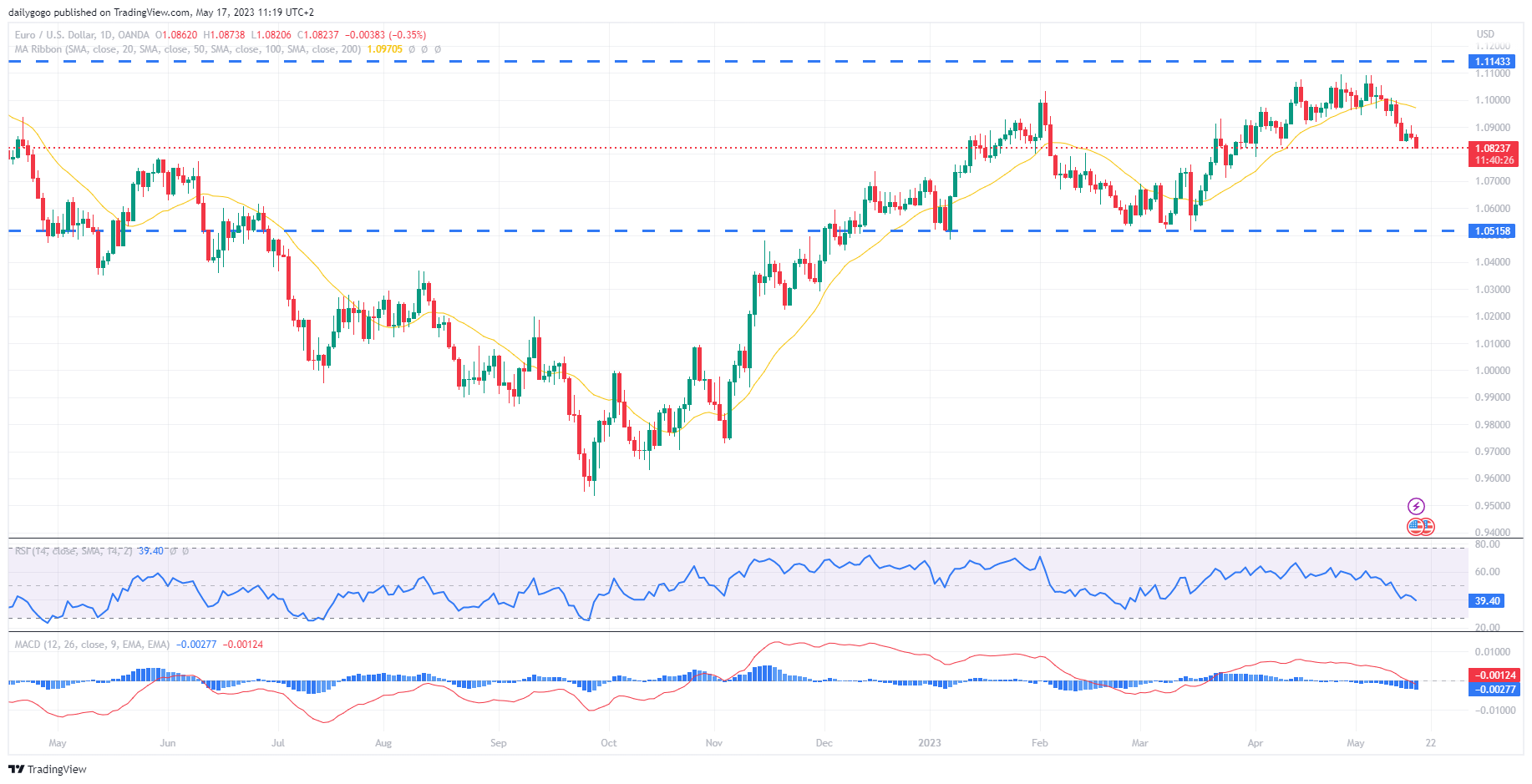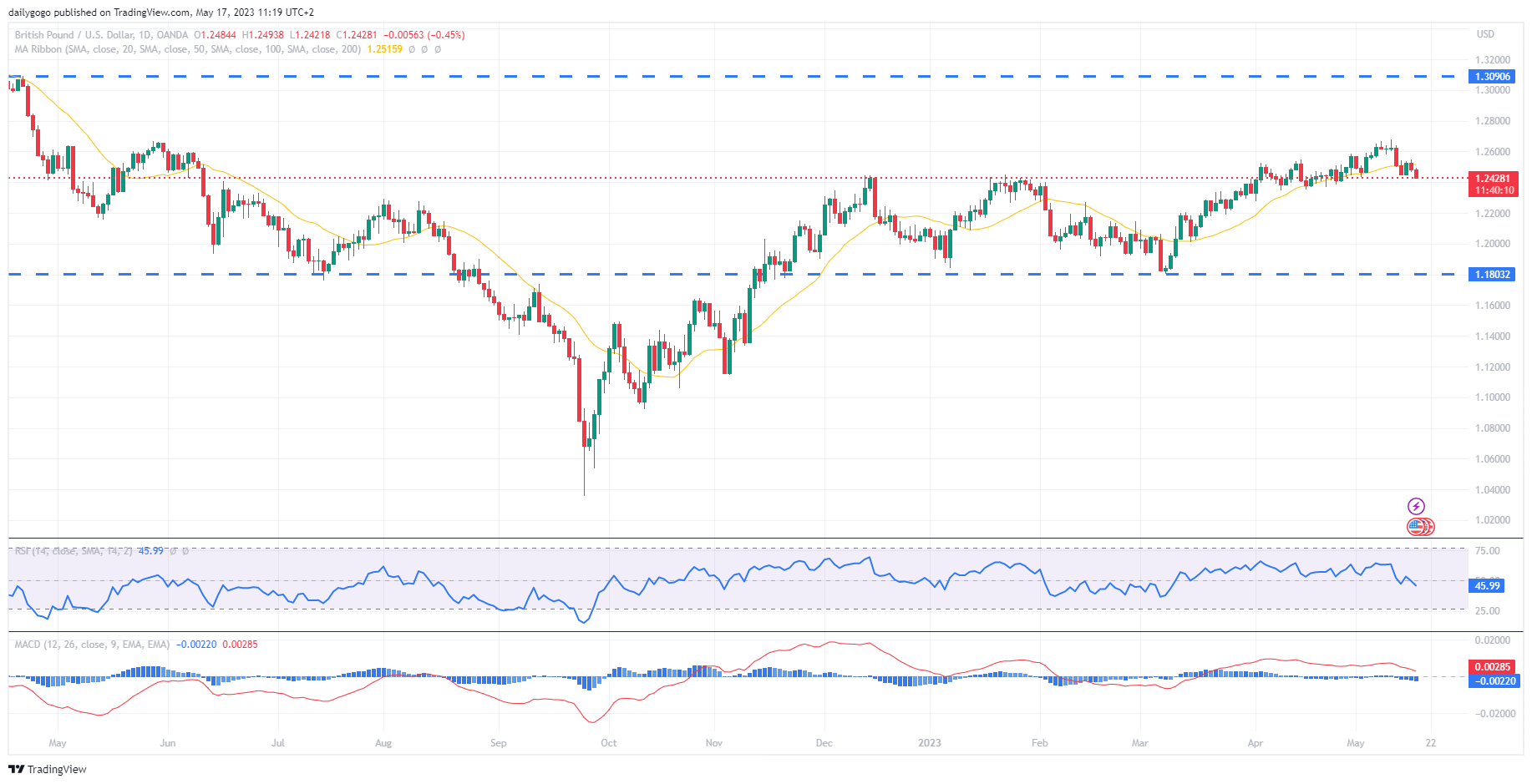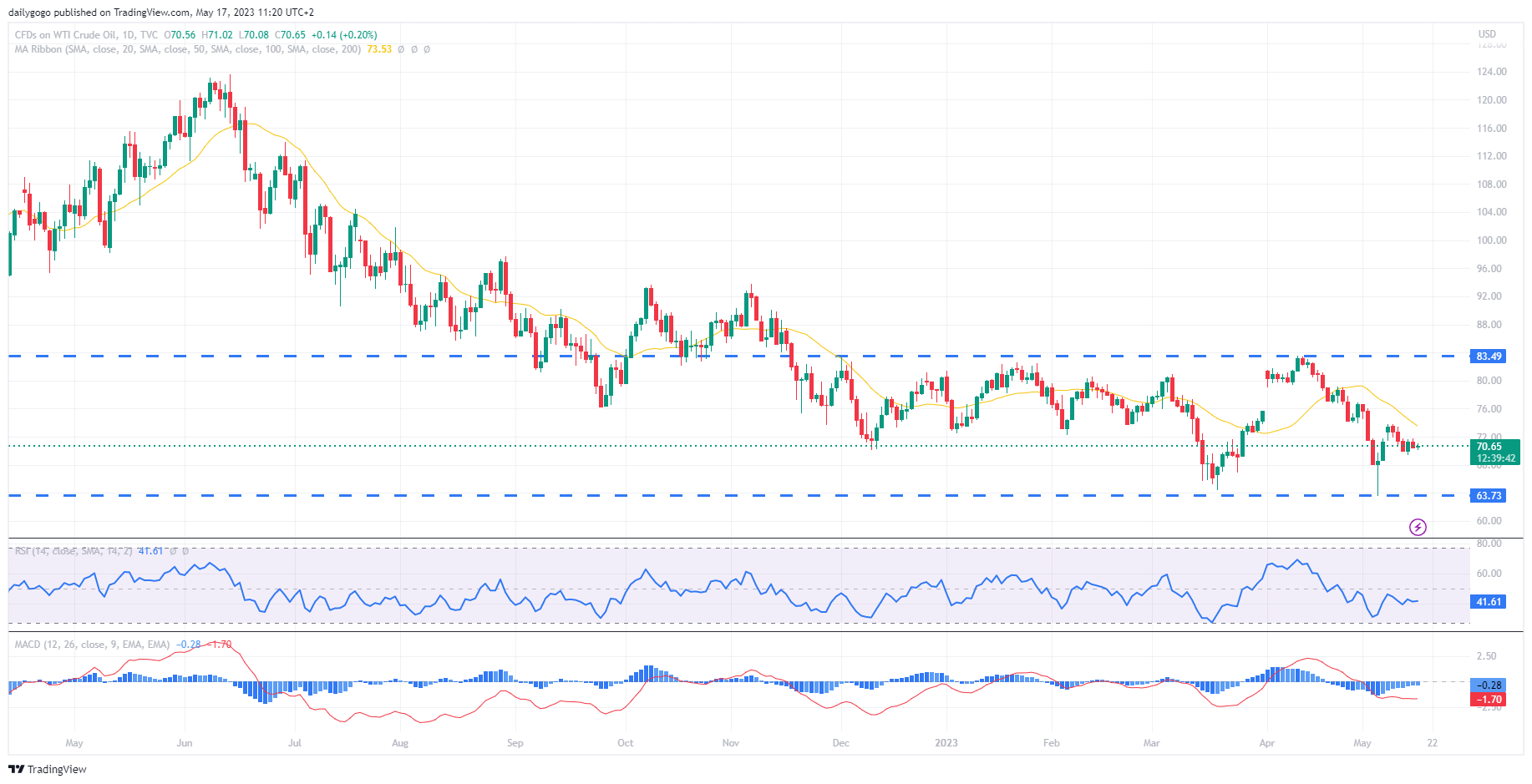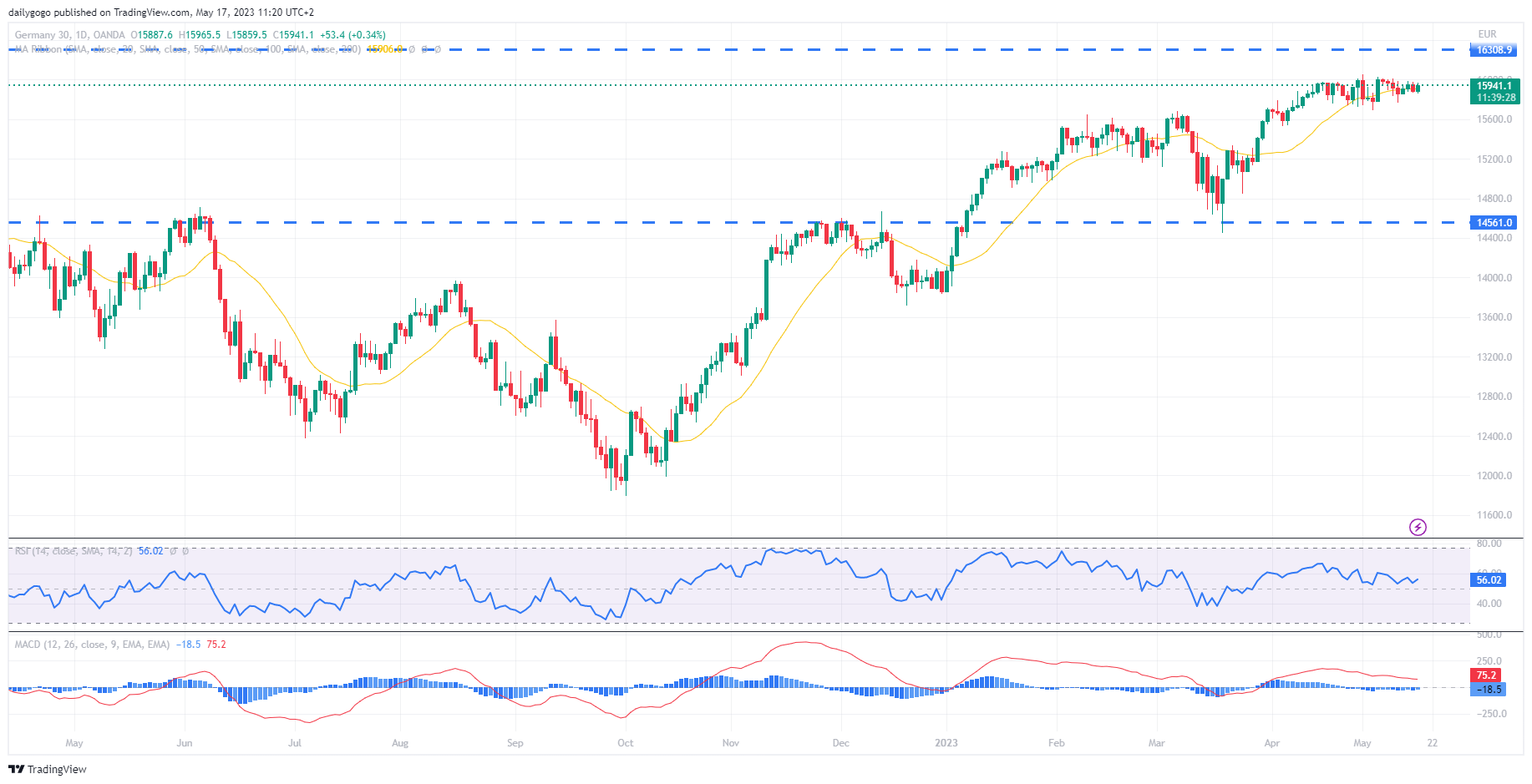EURUSD
- EUR/USD fell 0.16% to 1.0844 ahead of the release of the final April CPI data for the eurozone, which is expected to show elevated prices.
- The primary drivers for EUR/USD are the movements of the USD and the US debt-limit saga, with 1.0800 expected to act as support.
- The US dollar traded higher in early European hours Wednesday following hawkish comments from several Fed officials and with the debt ceiling standoff in Washington continuing.
- Cleveland Fed President Loretta Mester said on Tuesday that she can't say if the next move could be an increase or decrease, given how stubborn inflation has been based on the data she has seen so far.
- EUR/USD is likely to remain influenced by the US dollar's movement and the US debt-limit situation. The US CPI data and the Fed's minutes release later in the day could offer direction.
Closing statement: The EUR/USD saw a slight dip ahead of the release of final April CPI data for the eurozone and is expected to be primarily influenced by the movements of the US dollar and the US debt-limit saga. The market awaits the US CPI data and the Fed's minutes release later in the day for further direction.
GBPUSD
- GBP/USD fell 0.35% to 1.2442 due to an unexpected rise in the U.K. unemployment rate in March.
- Sterling is currently testing the support level at around 1.2425, which was previously a strong resistance level.
- The DXY, which tracks the dollar against six other currencies, gained 0.23% to 102.843.
- The dollar has been benefitting from the uncertainty surrounding the potential for a U.S. default if a deal to lift the country’s borrowing limit is not reached.
- President Joe Biden's meeting with Republican House of Representatives Speaker Kevin McCarthy on Tuesday did not result in a decision about a deal to lift the borrowing limit.
| SMA (20) | Neutral | |||
| RSI (14) | Falling | |||
| MACD (12, 26, 9) | Slightly Falling |
Closing statement:The GBP/USD currency pair is currently under pressure due to the rise in the U.K. unemployment rate, while the dollar has been strengthening due to uncertainty surrounding a potential U.S. default.
GOLD
- Gold settled below $2,000 for the first time since May as investors sought the safety of the dollar and U.S. Treasuries amid mixed U.S. economic data.
- The metal's closing streak at above $2,000 an ounce lasted two weeks before bears took over on Tuesday.
- A lack of a deal on the U.S. debt ceiling could push the economy into recession, according to President Biden, making the dollar an attractive safe haven asset.
- The dollar was also boosted by hawkish comments from Fed policymakers, suggesting that interest rates could still be raised further.
- Gold, which is often seen as a hedge against economic and political turmoil, may struggle in the short term due to the strong dollar.
| SMA (20) | Neutral | |||
| RSI (14) | Slightly Falling | |||
| MACD (12, 26, 9) | Falling |
Closing statement: Gold's retreat below $2,000 highlights the metal's sensitivity to shifts in investor sentiment and the strength of the dollar. While it may continue to face headwinds in the short term, its longer-term outlook remains supported by ongoing economic and political uncertainties.
CRUDE OIL
- Crude oil prices fell for a second day due to a surprise rise in U.S. crude inventories, stoking demand concerns.
- U.S. crude stockpiles rose by about 3.6 million barrels in the week ended May 12, according to market sources.
- Seven analysts polled by Reuters had expected a 900,000-barrel drawdown.
- U.S. government data on crude and product stockpiles is due later today.
- The crude prices remain under pressure as traders are still worried about global demand.
| SMA (20) | Falling | |||
| RSI (14) | Neutral | |||
| MACD (12, 26, 9) | Neutral |
Closing statement: The unexpected increase in U.S. crude inventories and weaker-than-expected economic data from the United States and China, the world's two biggest oil consumers, have kept crude oil prices under pressure. Investors will keep an eye on the U.S. government data on crude and product stockpiles to gauge the demand outlook for crude oil.
DAX
- European stock markets traded cautiously on Wednesday amid U.S. debt ceiling uncertainty and ahead of the final eurozone inflation figures for April.
- Germany's DAX index traded 0.39% higher, the UK's FTSE 100 rose 0.29%, and France's CAC 40 fell 0.11%.
- The potential for a catastrophic U.S. debt default has created nervousness across global markets.
- Commerzbank stock fell over 7% despite reporting a nearly doubled net profit in the first quarter, citing uncertainty over the fate of its mBank unit in Poland.
- Siemens stock rose 2.2% after the company raised its full-year sales and profit guidance and beat sales forecasts during its second quarter.
| SMA (20) | Neutral | |
| RSI (14) | Slightly Rising |
|
| MACD (12, 26, 9) | Neutral |
Closing statement:The European stock markets showed mixed results on Wednesday, with caution prevailing amid global uncertainty and concerns over the U.S. debt ceiling.





